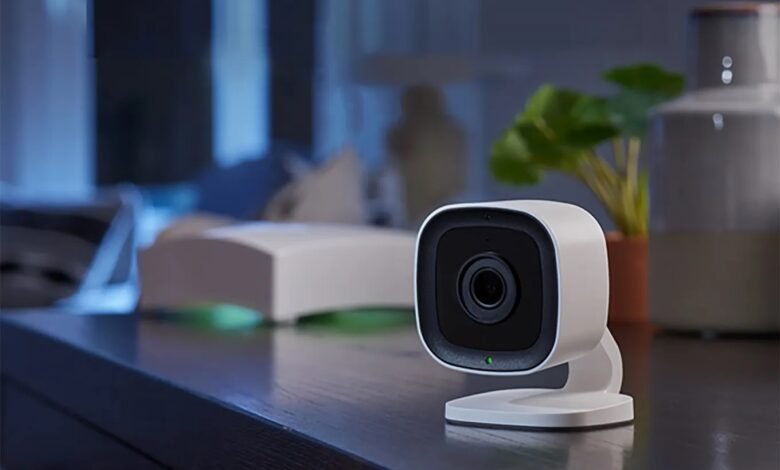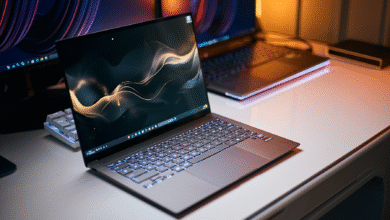The Future of Home Security: Integrating Machine Learning and IoT Devices

As the world becomes a global village, concerns over the safety of homes have emerged as a major issue. Old-fashioned mechanical locks and rudimentary alarm systems are no longer adequate to safeguard homes and other premises against today’s increasingly skilled thieves and cybercriminals. These new technologies have enabled even better security solutions that utilize both the ML and the IoT systems. While these technologies improve the functionality of home security systems, they also allow homeowners to have a pleasant real-time experience.
Furthermore, the increased employment of ‘green’ technology like solar-powered surveillance cameras brings in both efficiency and environmental sensitivity. This article discusses what changes in home security are possible with a focus on the impact of machine learning, the application of IoT, and solar-powered surveillance cameras and gives an insight into their advantages and disadvantages as well as the future of their applications.
Read More: Skip Tracer For Remote Surveillance and Home Security
The evolution of home security systems
Over the last few decades, the concept of home security has changed dramatically. Traditional but effective: from the basic lock-and-key mechanisms and building elaborate alarms the need for safeguarding one’s own home and family influenced the development of the technology. In the early days of home security systems, there was a lot of emphasis on monitoring these systems manually, simple sensor alarms, and interventions that did not require going through a central unit. But with the advancement of digital technology, the trends changed slightly and people started using digital surveillance systems which comprised surveillance cameras, motion sensors, and wireless alarms. The systems offered more automation than the preceding ones but still had little intelligence and flexibility.
Jump to the present, home security has been taken to the next level through the integration of smart technologies. With the integration of AI, machine learning, and IoT devices, home protection has undergone a radical transformation. These systems now can forecast, scrutinize, and counteract threats in avenues that were impermissible to envision before.
The Role of IoT in Home Security
The Internet of Things (IoT) is defined as the network of physical objects connected and exchanging information dynamically and efficiently. When it comes to home security, IoT has made smart cameras, sensors, and alarms to be integrated and synchronized. These devices can also be operated from a smartphone thus giving the homeowners complete control of the security systems regardless of their location.
Smart Cameras and Sensors: Most homes today have smart cameras that contain aspects like motion detectors and those that can work well at night. These devices provide constant surveillance and can even alert the homeowner’s phone when suspicious activity is observed. Alarm systems installed in doors and windows can alert the homeowner of intrusion into their home.
Doorbell Cameras and Smart Locks: Smart doorbells are devices that are installed at doors to enable a homeowner to see and even speak to whoever is at the door without opening the door. Smart locks on the other hand enable homeowners to control the physical locks in their homes using their phones or even voice commands. Smart integration with other devices makes the door unlock only in the presence of other trusted devices.
Cloud Storage and Data Sharing: These Smart security systems are usually IoT-based and back their data into cloud services. It enables users to be able to access the recordings and security logs for activities to be monitored from remote locations. Data sharing is another factor since the cloud optimizes the data sharing between the devices to ensure that all elements of the security system are as synchronized as possible.
The Use of Machine Learning in Home Security
Where IoT is the foundation, ML is the brains of today’s security systems. ML then enables the systems to gain knowledge learn from patterns and create mechanisms to predict the risks before these occur. This is a significant change from conventional architectures that simply detect when a violation takes place.
Threat Detection and Prevention: Video feeds, sensors, and other inputs of data can be processed by the algorithms to recognize acts of suspicious nature. For instance, if a person is standing outside a house for a long time, the device will alert the owner that this is not normal behavior. These algorithms improve with time especially once they have been taught based on previous incidents and the differences between actual threats and alarms.
Facial Recognition Technology: Face recognition is one of the tools that are used with the help of ML. This technology when incorporated into security cameras means that the cameras can recognize people based on their faces and compare them against a list of known persons. This is very effective especially when trying to distinguish between a family member, a friend, and an intruder. Sophisticated systems can even assess when a person is becoming dangerous in any slight way.
Predictive Analytics: Another possibility is to use machine learning to predict security threats based on patterns of users’ behavior. For instance, if the homeowner used to lock the door at a certain time at night, then one day he or she forgot to do so, the system can alert him or her, or do it automatically. It also assists in finding patterns as to when certain crimes are most likely to happen or in which areas, for instance, break-ins.
Solar-Powered Surveillance Cameras: A Game Changer in Home Security
Another new development in home security is the use of solar power to support surveillance cameras. These cameras act as easy to easy-to-install wireless cameras that are environmentally friendly as opposed to wired cameras or cameras that use batteries while ensuring that they perform their operations on average. Since human habitats and structures are now aspiring for an environmentally friendly and power-saving design, devices powered by solar are complementary to the call of the hour.
Advantages of Solar-Powered Surveillance Cameras:
- Energy Efficiency: Solar cameras operate on power obtained from sunlight eliminating the need for other sources of power. This not only reduces the electricity expenses but also makes it possible to have the cameras working effectively even during blackouts or any other power-related problems, as this will be an essential tool for monitoring the events.
- Remote and Off-Grid Capabilities: Solar-powered cameras are ideal for regions where electrical supply is limited or might be costly to supply. These cameras can be used in rural areas or large properties and can be powered without having to be wired such as other cameras do, hence saving on costs of installation.
- Sustainability and Environmental Impact: With the emergence of green solutions, solar-powered surveillance cameras are of great significance as they are energy-efficient and do not have as high energy demands as other cameras. This can also be aligned with the trends of developing environmentally friendly technologies in every sphere of human life including smart homes, smart transportation, etc.
- Reduced Maintenance: They do not require frequent power supply due to their green power source hence little need for maintenance and battery change. The cameras can function for an extended period without requiring a lot of attention as long as the solar panels that power them are in sunlight frequently.
Challenges of Solar-Powered Surveillance Cameras:
However, it is important to look at the prospect of such systems to identify some disadvantages, albeit awareness of their advantages is unequivocal. The performance of solar-powered cameras is influenced by light conditions: they draw their power from illumination, and it implies that their productivity will be lower where sunlight is scarce or where it rains a lot. However, some drawbacks are observed in the use of solar power in police cameras as it delivers limited power due to the intermittent nature of sunlight; this has however been tackled by the increased technology in battery systems that enable the cameras to store sunlight energy for use during blizzard conditions.
Moreover, the investment in the initial installation of the solar-powered surveillance cameras may be a little bit expensive compared to the traditional models. But in the long run, such investment pays off in terms of energy costs that are saved as well as reduced need for maintenance.
The Integration of ML, IoT, and Solar Power: Holistic security for the home
How future home security will develop Its maximum prospects are seen in machine learning, IoT devices, and solar-powered solutions. Integrating these technologies makes it possible for homeowners to have an intelligent, strong, and sustainable security system that is flexible for future advancements.
- Real-Time Data Analysis: IoT devices can get large amounts of information from the various sensors, cameras, and other connected gadgets in the home. The information is processed in real-time by machine learning algorithms that detect irregularities and possible security threats. These cameras come with built-in batteries that capture video data continuously throughout the day irrespective of the solar power availability.
- Personalized Security Responses: For instance, more progressive systems can detect the patterns and schedules of homeowners and modify responses to those patterns. For instance, the system can differentiate a family member coming back home at midnight or even in the early morning from an intruder, and give a specific security response that downplays the chances of false alarms.
- Energy Independence and Environmental Benefits: Solar-powered surveillance cameras mean home security is not compromised while minimizing the emission of greenhouse gases. This pairing of sustainability and innovation should only become more popular in home security systems as consumers increasingly seek out environmentally friendly solutions.
- Seamless Connectivity and User Control: IoT and ML integration make it possible to connect different devices in the easiest way possible. Homeowners can control security systems through apps or the use of voice commands such as unlocking doors and watching surveillance cameras among others. As these systems advance, they can not only detect risks and dangers when the homeowner is away from his house but can also alert him of the same when he is kilometers away from his house.
Read More: Hackers Can Access Your Home Security Cameras: Here’s What You Can Do to Prevent Them
3 challenges that need to be addressed for future home security systems
In conclusion, as it is evident, home security has a bright future, but some issues need to be resolved to realize these possibilities and make homes secure.
- Privacy Concerns: Growing into prominence, smart security systems are now facing the challenges of privacy infringement and data protection. Machine learning algorithms work based on a large number of people’s private videos and behavioral data, which can be abused in some way. Considering the highly sensitive nature of the BFSI sector, data security and encryption will be important factors for cementing user confidence.
- Cybersecurity Risks: It has also been pointed out that many IoT devices can easily be hacked if their security is not well taken. Home security systems that are based on interconnected gadgets can be at risk of cyber threats, and subsequently become helpless. Protecting such systems will require the use of appropriate security measures like two-factor authentication and timely updates on the software.
- Affordability and Accessibility: Although there is a general decrease in prices on solar-powered surveillance cameras and AI-driven systems, it is still challenging for homeowners with a large number of cameras. Stakeholders will also be anxious to ensure that these technologies and applications are made available to as many users as possible to realize higher usage.
Conclusion
In this case, it can be agreed that home security is in the future with the incorporation of machine learning, and IoT devices among other sustainable technologies such as solar-powered surveillance cameras. These innovations are bringing better, more effective, and sustainable security systems that can address the modern dynamic security threats. As innovation pushes through in the areas of artificial intelligence, data analysis, and sustainability, the opportunities for home security also grow. The benefits to homeowners will include enhanced control, personalized response to security, and conservation of the environment. Nonetheless, other issues such as privacy, cyber security, and affordability of these systems will have to be resolved to ensure that their implementation can be achieved at this scale. As we look to the future, it’s clear that home security will become more intelligent, connected, and sustainable than ever before.









